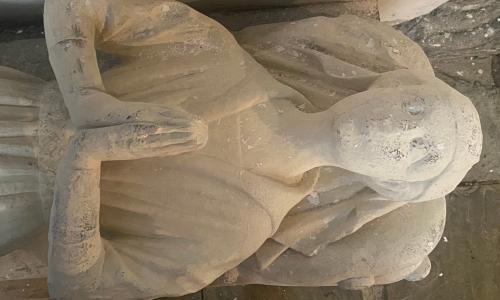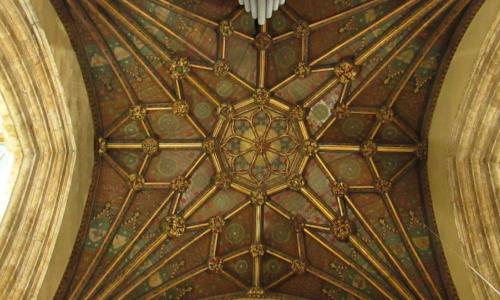What is the significance of the lamb in Christianity?
During a church service called Holy Communion, Christians often say or sing the ancient Christian anthem (Latin: Agnus Dei) ‘Lamb of God, who takes away the sin of the world, have mercy on us… grant us peace.’ But where do Christians get this metaphor from? The answers are in the Bible.
One of the earliest images of Jesus in Christian art is as a lamb with, or near a cross. Another common image is Jesus the Good Shepherd leading his lambs or his followers and believers and laying down his life for them. References to this can be found in the following Bible passages: Ezekiel 34.15; Psalms 23; John 21.15 and 10.11-15; Hebrews 13.20.
You can find images of lambs like this all over Hull Minster. Either carved in stone or wood, or depicted in the stained glass, they have lots of things in common.
The importance of the lamb as a sacrifice starts in the Old Testament
The Temple
We can read that lambs were the most common animal to be sacrificed in ancient Israel at Jewish Temples (Leviticus 4.32). Lambs could be sacrificed as a sin offering. Twice per day a lamb was slaughtered in the Jerusalem Temple (Exodus 29.38-42).
Abraham and Isaac
In the Book of Genesis, God commanded Abraham to build an altar and sacrifice his own son Isaac, and on the way to the altar Abraham said to Isaac, seeing Abraham’s obedience at the last moment God provided a Lamb for the offering instead. (Genesis 22.8)
The Passover Lamb
The Old Testament gives instructions for the sacrifice of the Passover lamb. From that time Jews have celebrated Passover the escape of the people from slavery in Egypt. (Exodus 12.1-29)
The suffering servant
The prophet Isaiah declared that God’s servant would be, ‘oppressed, and he was afflicted, yet he opened not his mouth; like a lamb that is led to the slaughter, and like a sheep that before its shearers is dumb, so he opened not his mouth” (Isaiah 53:7).
New Testament references to Jesus as the lamb of God
The first person to call Jesus the ‘Lamb of God’ was John the Baptist who saw Jesus coming towards the river Jordan “Behold, the Lamb of God, who takes away the sin of the world!” (John 1:29) In John’s Gospel the crucifixion takes place on the day of preparation for the Passover when the lambs would be sacrificed.
The image of the lamb relates to Jesus’ sacrifice, his self-offering on the cross. Christians believe that when Jesus, the Son of God, was lifted up on the cross as our high priest he freely offered himself, the pure Lamb of God, once for all as a sacrifice for sin (Hebrews 9.11-26; 1 Peter 1.19). Like Abraham God sends his only son, the one human without sin, to die for sinful humanity. As an obedient and meek lamb (Is 40.11; 53.7; Acts 8.32) Jesus willingly accepts a violent and brutal death thus defeating evil and death. He is the Paschal Lamb whose sacrifice frees us from bondage to the slavery of sin and death (1 Corinthians 5.7).
Finally, in the last book of the Bible called Revelations, Jesus is the conquering lamb that was slaughtered is seated upon the throne (Rev 5.6-14) Lastly ‘the lamb at the centre of the throne will be the shepherd’ of the church (Rev, 17.14) gathered around the throne at the marriage banquet when Christ is united with his church (Rev 19.6-8)
The origins of our tiny lamb
Our tiny lamb was found during the excavations at Castle Street Burial Ground in 2020 by the team from Oxford Archaeology working for the Highways Agency to improve the A63.
After being carefully cleaned and stabilised the lamb was brought to Hull Minster with the remains of the body which has been reburied in the crypt beneath the display. It is possible that this was a treasured keep-sake or possession, put in the coffin to accompany the child to heaven.





